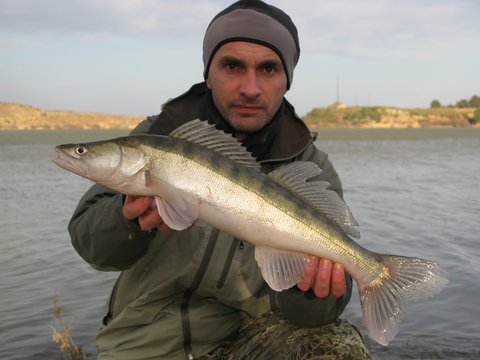
When considering what baits to use, anglers often think of a fish’s senses of sight, hearing and smell, but there is one more sense a fish has, which is extremely important in feeding activity. It is called the lateral line.
Fish have two lateral lines, which run the length of each side of their bodies, from the head to the tail. They are clearly visible on most species of fish, including largemouth and smallmouth bass, walleyes and northern pike. Less visible lateral pores are also located around the head, and their location varies from one species to the next. Like the ears and eyes, the lateral lines are sensory organs, or rather a connection of them, which a fish uses to detect movement and changes in water pressure (pressure waves). Lateral lines are so sensitive, they can even detect the slight pressure waves from prey that may appear stationary in the water.
One of the biggest mistakes anglers can make is to imagine that a fish identifies and pursues baits the way a human would. As humans, we might see and/or hear the bait; then go after it. With fish, things work differently. This is where the lateral lines come into play.
A fish uses its lateral lines to help it feel movement and pressure waves in the water, and then to orient itself to the source of that movement. So when a fish is pursuing prey, it depends heavily on its lateral lines to identify, locate and catch that prey. Research has shown that even a blind fish can locate prey, by using its lateral lines.
The lateral lines also play an important role in helping schooling fish stay together. If you have ever seen a video of an enormous school of fish, in which all the fish seem to move together in unison, this a perfect example of how lateral lines are used to stay together. They feel the other fish around them and respond to that movement.
As anglers it is important to note that some species of fish depend more heavily on their lateral lines than other species, when it comes to pursuing prey. Largemouth bass, for example, are extremely dependent on their lateral lines when compared to a muskie, which depends more on sight to locate bait. However, with each species of fish, the lateral lines are essential in locating prey.
Using the lines
So now that you have a basic understanding of how fish use their lateral lines, the trick is putting that information to use when you are on the water. As if bait selection is not confusing enough, taking lateral lines into consideration can make it even more confusing. Typically, when a bait is not working, your first response might be that the bait is the wrong color or pattern, or that the bait does not make any noise. In truth, the problem could be that a bait is not creating a pressure wave in the water that makes a fish want to pursue it.
Of course, there is no way for you to accurately measure the pressure wave your lure is creating. So the best you can do is to experiment. Consider the factors that may change the pressure wave of a lure. These factors include the retrieval speed of the bait, the size of the bait and the vibrations a lure is making. You can also try jerking or jigging a bait at different intervals to change the pressure wave.
In general, when fishing at night or in low-light conditions, when fish are even more dependent on their lateral lines, it is best to use a larger bait, which creates a more dramatic pressure wave.
Of course, when a fish ultimately decides to strike your lure, it uses multiple senses together to decide whether to pursue it or leave it alone. So the lateral lines are just one piece of the puzzle. But anglers who take lateral lines into consideration have one more tool they can use to solve that puzzle and entice a fish into taking their bait.








